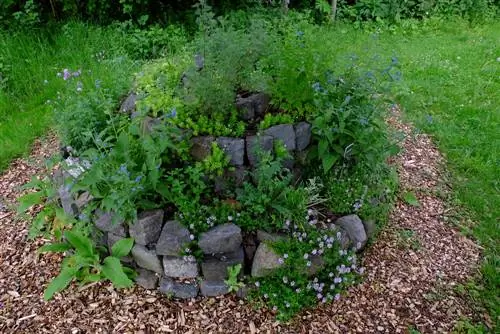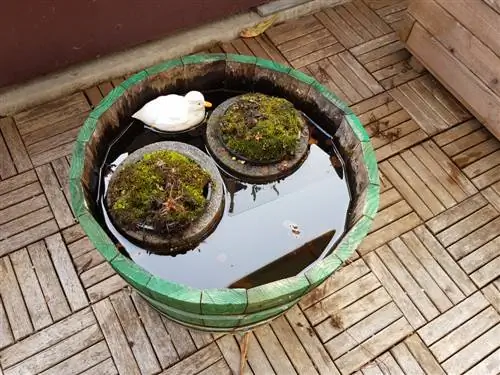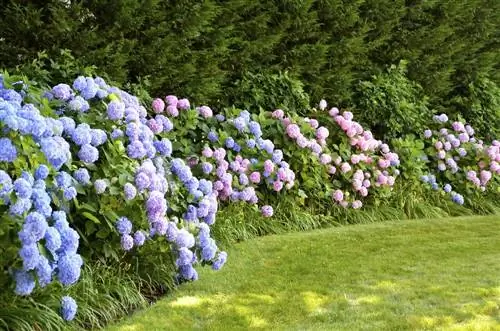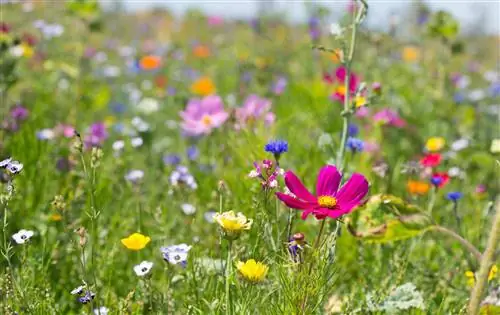- Author admin [email protected].
- Public 2023-12-16 16:46.
- Last modified 2025-01-23 11:21.
Native species are robust and easy to care for, making them ideal for hedge design. Before creating, consider the characteristics of the species to create an attractive hedge.
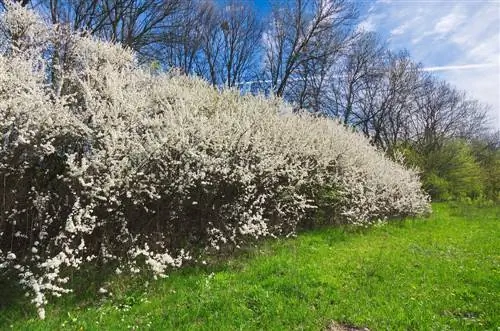
Which plants are suitable for an easy-care hedge?
An easy-care hedge consists of robust, native species such as blackthorn, cornelian cherry, hawthorn, Pfaffenhütchen or berry bushes. They are undemanding, weather-resistant and require little care such as an annual topiary and occasional watering in the first year.
What characterizes an easy-care hedge
An easy-care hedge consists of undemanding plants that adapt to the respective site conditions. They tolerate Central European weather conditions and are resistant to pathogens and pests. Native shrubs do not require any complex care. In order to create aesthetic hedges, one topiary cut per year is sufficient for many species. If you completely avoid cutting measures, you promote a wild character and provide a valuable habitat for birds, insects and small mammals. Native woody species meet all the requirements of easy-care shrubs.
Planting instructions
You can create deciduous hedges between October and November. This allows the trees to develop a fine root system over the winter. You should plant evergreen trees between August and September so that they can develop sufficient roots before the onset of winter. A number of four to five bushes per square meter is a good guideline for creating a dense hedge. Note the different growth forms, bush heights and growth speeds and adjust this guideline accordingly.
Preparing the soil
Loose up the soil on the entire area that will later be planted with shrubs. Remove weeds and improve the soil with compost. Dig planting pits according to the number of bushes. The holes should be twice the size of the root ball.
Placing trees
Prune the bushes so they can concentrate on root growth. Loosen the root ball and place it in the planting hole. The top edge of the bales should sit slightly below the soil surface. Fill the planting pits with the excavated soil and water the shrubs thoroughly. The substrate is washed in so that the roots come into contact with the surrounding soil.
Care
Water young plants in the first year if dry periods are prolonged. Established shrubs tolerate water deficits without any problems. Cut the trees back in the fall after the bird breeding season. A topiary cut is sufficient for native trees. Leave the leaves that have fallen in autumn under the hedge. The foliage rots over the winter, so the shrubs benefit from the released nutrients the next spring. You do not need to fertilize the trees because their powerful root system allows them to draw sufficient nutrients from the substrate.
Suitable species
Blackthorn (Prunus spinosa) and cornelian cherry (Cornus mas) produce densely growing hedges that do not place any special demands on the soil. Like the hawthorn (Crataegus monogyna), they develop edible fruits. The Pfaffenhütchen (Euonymus europaeus) bears aesthetic flowers between May and June that produce a sweet-smelling nectar. Berry bushes such as gooseberries, blackberries, raspberries or currants are suitable as easy-care hedges.
Easy-care climbing plants:
- Wild grapevine (Vitis vinifera)
- Ivy (Hedera helix)
- unfilled climbing roses (Rosa pimpinellifolia, Rosa canina)



